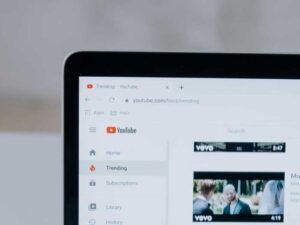Ever looked at your project numbers and thought, “How did we end up this far off?” If so, you’re not alone. In the construction world, going over budget is frustratingly common. But here’s the thing—it doesn’t have to be. Most overruns aren’t because of some huge, unpredictable event. They’re the result of everyday missteps that add up fast.
So let’s break it down. Why do projects run over budget? And more importantly, what can you actually do to keep things on track?
The Real Cost of Going Over Budget
Before we jump into the why, let’s talk about the impact. Going over budget isn’t just an accounting issue. It hits your bottom line, messes with your schedule, and—if it happens enough—can wreck your reputation.
Late projects mean late payments. They stretch your team thin. They frustrate clients. And worst of all, they make future bids harder to win. Once people see you as “the crew that always runs late and over,” it sticks.
So yeah, the stakes are real.
The Usual Suspects: Why Budgets Get Busted
1. Poor Planning and Guesswork Estimates
Ever put together a bid based mostly on gut feeling? Maybe a quick skim of a similar past job? That might work once or twice. But over time, those guesstimates pile up into big cost gaps. If you’re not using hard data and detailed takeoffs, you’re already behind.
2. Scope Creep (a.k.a. Death by a Thousand Changes)
It starts small. “Can we add just one more fixture here?” “What if we move that wall six inches?” Before you know it, the whole job looks different. If you don’t catch and price every change, the budget starts bleeding.
3. Labor Issues
Let’s be honest—finding and keeping skilled labor isn’t easy. No-shows, scheduling conflicts, or underperforming crews can throw off your timelines and drive up labor costs fast.
4. Material Surprises
Prices go up. Deliveries get delayed. Maybe that special tile is suddenly backordered for six weeks. If you’re not watching supply chains closely, materials can become a budget-wrecking wildcard.
5. No Real-Time Tracking
This one’s sneaky. Without a system that shows you, in real time, what’s happening on-site, you don’t know something’s off until it’s way too late. By the time you catch the problem, it’s already cost you.
Okay, So How Do You Fix It?
Let’s get to the good stuff. Here’s how to actually stay on budget without losing your mind.
Start with Data-Driven Estimates
Forget guesswork. Use job history, vendor pricing, and detailed scopes to build your numbers. There are plenty of tools out there that can help with this (more on that later). The more detailed your estimate, the less room there is for nasty surprises.
Lock in the Scope Early (and Guard It Like a Hawk)
Set clear expectations upfront. Make sure the client knows what’s included—and what’s not. When changes come up, document everything and update the budget before you say yes.
Use Software That Actually Helps
Look, we’re not saying software solves everything. But the right platform can make a huge difference. You want something that tracks hours, materials, and costs as they happen—not two weeks later when it’s too late to react.
And while we’re on the topic, it’s worth understanding how much these tools might set you back. If you’re comparing platforms or just trying to budget better, it helps to get a clear picture of construction software cost. Knowing what you might invest upfront gives you more control later on.
Keep Everyone Talking
Miscommunication is expensive. Missed deadlines, duplicated work, wrong materials—they all come back to unclear messages. Have a system for daily updates. Use shared checklists. Keep the field and office in sync.
Always Plan for the “Oh Crap” Moments
No matter how tight your plan is, something will go sideways. A machine breaks. A delivery is late. It rains for a week straight. That’s why you need a contingency in every budget. Build in a buffer. It’s not about pessimism—it’s just smart planning.
What Makes Budget Tracking Easier?
Here’s what to look for if you’re picking tools to help with all this:
- Real-time updates so you’re not guessing
- Mobile access so your crew can input data from the field
- Custom reporting so you can drill into what’s costing you the most
- Task tracking so nothing slips through the cracks
StackCT and tools like it bring all that into one dashboard. When you know where every dollar is going, staying on budget stops feeling like a guessing game.
Final Thoughts
Look, budget overruns happen. But they don’t have to be the norm. Most of the time, they come down to preventable problems: bad estimates, fuzzy communication, unmanaged changes.
If you plan smart, track in real-time, and keep your team aligned, you can stop budget creep in its tracks. And if you’ve ever thought, “There has to be a better way to manage this stuff”—well, you’re right. There is.
Staying on budget isn’t about luck. It’s about having the right plan, the right tools, and the right mindset from day one.










